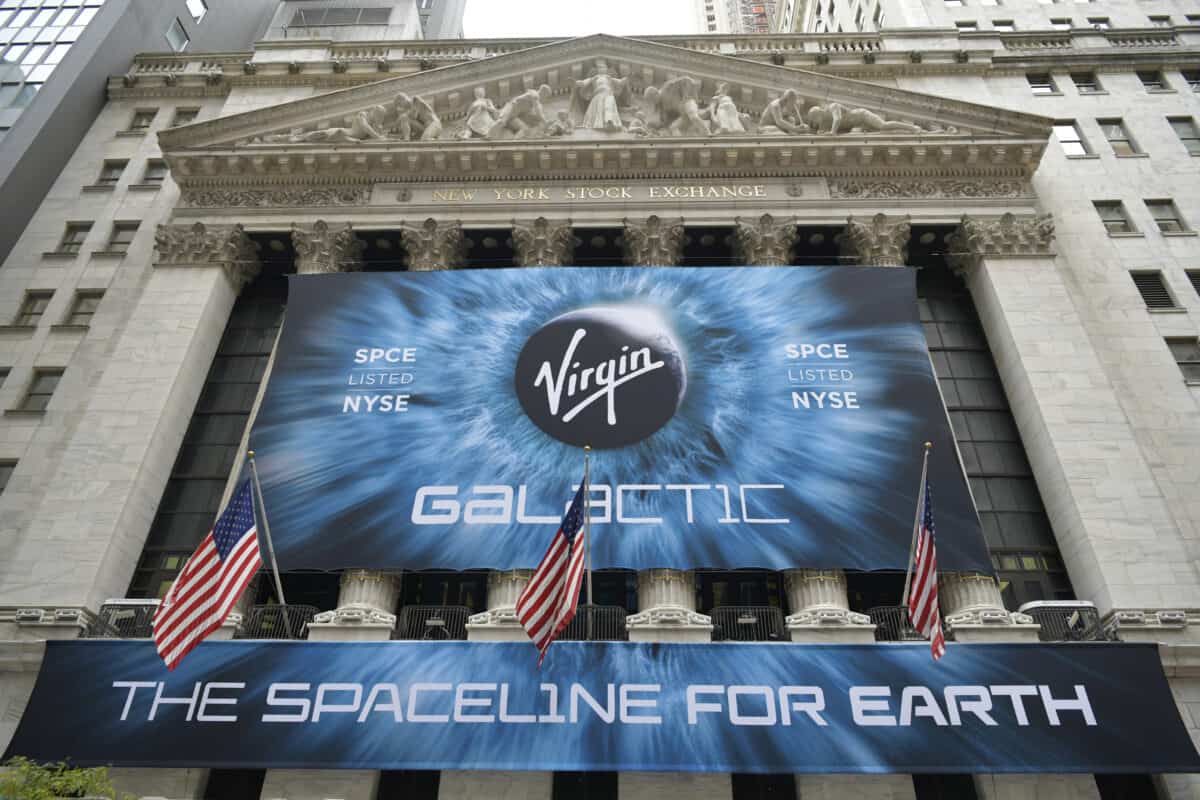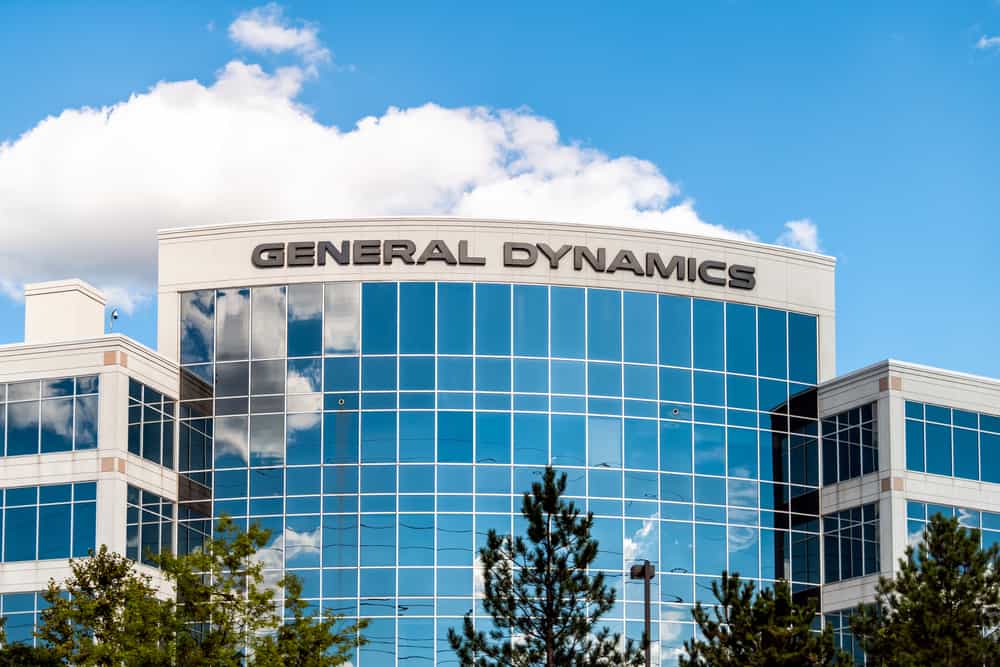If you think about space exploration, your thoughts might go straight to NASA. However, it’s easy to ignore that the space agency doesn’t build most of its rockets. NASA hires contractors for the job. So, who is NASA hiring to launch their experiments into space? Continue reading to learn more about the largest space and exploration companies that aren’t associated with the government.
| Rank | Company | Value |
|---|---|---|
| 1. | SpaceX | $180 Billion |
| 2. | Boeing Defense, Space & Security | $127.64 Billion |
| 3. | Raytheon Technologies Corporation – Collins Aerospace Systems | $120.09 Billion |
| 4. | Lockheed Martin Corporation | $103.06 Billion |
| 5. | General Dynamics Corporation | $73.60 Billion |
| 6. | Northrop Grumman Corporation | $68.25 Billion |
| 7. | Sierra Nevada Space Systems | $5 Billion |
| 8. | Virgin Galactic | $835 Million |
| 9. | Blue Origin | $596 Million |
| 10. | Astra Space | $46 Million |
10: Astra Space ($46 Million)
A fairly new company, Astra is set to become the fastest-growing spaceflight company in the country. It was founded in 2016 by former NASA researchers with lofty ambitions. They started building rockets before people even knew they existed. When they went public, a rocket was nearly ready to reach orbit. Within five years, Astra successfully reached orbit, becoming the quickest company in history to build a rocket capable of making it to space.
Although Astra Space has less than 400 employees, it has earned contracts with the U.S. government. Their first demonstration won them over $2 billion for research purposes. The company now focuses on its next-generation vehicle, which can deliver payloads to multiple points in space.
9: Blue Origin ($596.4 Million)

What seemed to have started as a friendly competition between billionaires became a full-scale endeavor. Jeff Bezos, the founder of Amazon, started Blue Origin in 2000 and set his sights on a suborbital vehicle capable of bringing people to space. While he didn’t win the race (Branson beat him by nine days), Bezos continues to design rockets for more purposes than space tourism.
Blue Origin has several projects on the list. Not only are they improving on their suborbital vehicle, but they’re also designing a two-stage orbital (New Glenn), a lunar lander (Blue Moon), and reusable parts (Project Jarvis). The company positions itself to compete with SpaceX in the coming years.
8: Virgin Galactic ($835 Million)

On the opposite side of the spectrum, Virgin Galactic, a spaceflight company established by billionaire Richard Branson, is one of the newer companies in the industry. Established in 2005, Virgin Galactic teamed up with renowned aerospace scientist Burt Rutan to take spaceflight in another direction — space tourism.
The company hired Scaled Composites, an aerospace design subsidiary of Northrop Grumman, to design the spacecraft and launch vehicle. After more than a decade, they finished the design for SpaceShipTwo. Richard Branson and esteemed guests took the inaugural flight and became the first non-government people to go to space. Branson plans to expand the business to other wealthy investors, selling tickets to space for $250,000 per seat.
7: Sierra Nevada Space Systems ($5 Billion)
Sierra Nevada got its start in 1963, building airplanes for private companies and government agencies. Their experience earned them work with NASA, modifying surveillance and communication systems for their aircraft. The company is now one of the major utility manufacturers of aerospace technology in the U.S.
The company is working on multiple projects and is the primary contractor for Virgin Galactic’s rocket engines. They’re also designing several spacecraft for NASA and the Air Force. On top of all that, SNC has plans for a space drone and a skytruck.
6: Northrop Grumman Corporation ($68.25 Billion)
Northrop Grumman is the merger company of two century-old aircraft manufacturers. Having designed some of the prominent fighter jets in WWII, the company became an important defense contractor for the United States. Northrop Grumman has $13 billion in equity and almost 100,000 employees.
The company is renowned for its B-2 Spirit bomber, the only stealth bomber in the world. However, beyond its fighter planes, Northrop Grumman also plays a prominent role in spaceflight technology. It was the lead developer of the James Webb Space Telescope, which launched in 2021 to supersede the Hubble. It’s also working directly with NASA to design rocket boosters for the Space Launch System.
5: General Dynamics Corporation ($73.60 Billion)

General Dynamics isn’t just one of the largest space and exploration companies, it’s also one of the oldest. Founded in 1899 By John Philip Holland, the company got its start building the US Navy’s first submarines. Since then, they’ve established themselves as a primary defense contractor, with a market value of over $73 billion and 106,500 employees.
General Dynamics has four divisions, one of which focuses on aerospace technology. Using its depth of experience from building the Atlas rocket family, which helped launch missions to Mercury, the company continues to propel the spaceflight industry. They’re currently helping NASA communicate with the Perseverance rover on Mars.
4: Lockheed Martin Corporation ($103.06 Billion)

Lockheed has built aircraft since the early 1920s. Their Vega aircraft was used by Amelia Earhart for her record flight across the Atlantic Ocean. The company is one of the country’s leading contractors for aviation vehicles. Lockheed has $11 billion in shareholder equity and employs 110,000 people.
The company has a space division that aims to design propulsion technology. Their advancements are preferred for the country’s intercontinental ballistic missiles. But their research is just as important in space exploration as in defense. The company assisted in the building of the Titan family of rockets. They now work closely with Boeing to improve the cost of going into space.
3: Raytheon Technologies Corporation – Collins Aerospace Systems ($120.09 Billion)
Founded in 1922, Raytheon originally had nothing to do with aeronautics. The company got its start in refrigeration before shifting to electronics. They quickly became the lead developer in radar devices, earning a contract with the United States to build them in WWII. Their work eventually led to the consumer microwave oven.
It wasn’t until the 1980s that Raytheon purchased Beech Aircraft Corporation and entered the aerospace industry. Since then, the company has continued to expand. Raytheon Technologies employs nearly 174,000 people and has a $120 billion market cap.
Collins Aerospace, the defense contractor’s subsidiary, heads the design of spaceflight technology. While they support NASA’s communication protocols for the James Webb Telescope, Collins Aerospace has other critical projects underway. Currently, the aerospace company is testing thermoplastic composites, which would reduce the weight and manufacturing costs of spaceflight vehicles.
2: Boeing Defense, Space & Security (127.64 Billion)

Founded in 1939 as a division of Boeing, the aerospace and defense company has a long history in space and exploration. They’ve worked with NASA since the government agency’s inception, helping them design the lunar rover, the first stage of Saturn V, and the Space Shuttle, among other vehicles. The division brings in a considerable portion of Boeing’s revenue; with over 50,000 employees, the division makes over $20 billion annually.
As one of the world’s largest space and exploration companies, Boeing works closely with NASA on many of its high-priority projects. Currently, the defense contractor helps build the propulsion technology for the Space Launch System. They also work with Lockheed Martin in a joint venture called United Launch Alliance, which designs the launch vehicles for Starliner.
1: SpaceX ($180 Billion)

SpaceX was founded in 2002 by Elon Musk, who got his start in software development. He found success with his first rocket, the Falcon 1, and the company took off from there. SpaceX went on to make significant advancements in reusable parts and rocket propulsion. With $180 billion in equity and 12,000 employees, SpaceX is among the world’s largest space and exploration companies.
While SpaceX has taken on several projects since its inception, the company keeps its ultimate mission in mind: to colonize Mars. The spaceflight corporation is in the process of building the world’s largest rocket, called Starship. The vehicle can carry 220,000-pound payloads to Lower Earth Orbit (LEO), and other variants can transport more than 100 passengers.
The Largest Private Space Companies
For decades, it has been the dream of many citizens to take a tour of space. Private space companies are making that dream a reality. These companies are providing not only the possibility of trips to space for private citizens, the first of which occurred in 2020 through SpaceX, but also an actual settlement in the future. Up until recent years, space research and travel were limited to government-led programs that explored national security, public interest, and other entities to benefit human life on Earth. With private space endeavors, however, citizens, not government employees, are free to make and reach their own personal space goals. Here are some of the largest private space companies:
- SpaceX
- Virgin Galactic
- Blue Origin, LLC
- Bigelow Aerospace, Inc.
- The X Prize Foundation
- The Ultrawealthy
- Sierra Nevada Corp. Space Systems
- Orbital Sciences Corp.
- United Launch Alliance
- Lockheed Martin
